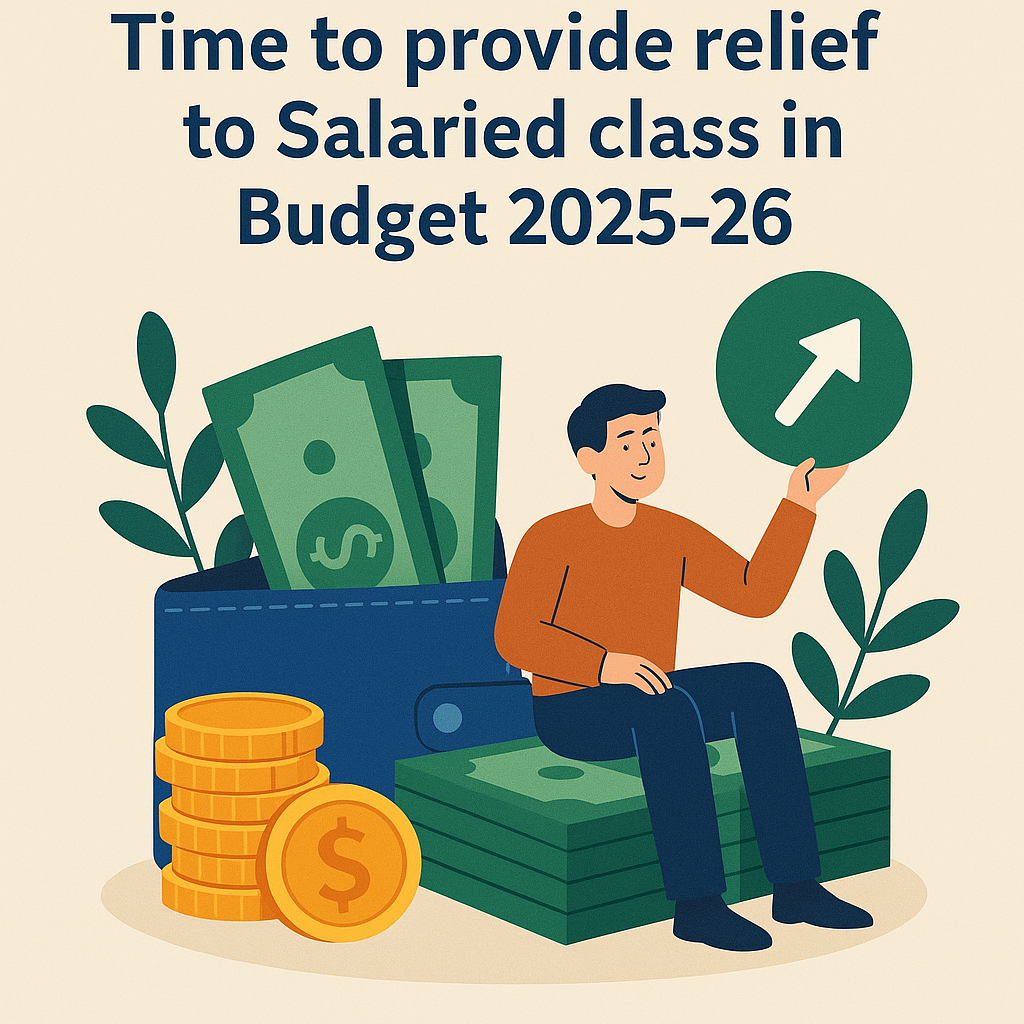
The salaried class in Pakistan, which has long been seen as the foundation of the formal economy, is currently facing a triple threat from rising inflation, stagnant wages, and an increasingly onerous tax system. With consumer price inflation hovering near 24% in 2023 and real incomes shrinking by over 14% in the past two years, this segment—which contributes more than 70% of direct tax revenue despite constituting less than 10% of the workforce—faces unprecedented financial erosion. The upcoming 2025-26 federal budget presents a critical opportunity to recalibrate policies that have disproportionately squeezed middle-income earners, risking not only their economic survival but also the country’s broader productivity and social stability.
Central to this recalibration is the urgent need for progressive tax reforms. Pakistan’s current income tax structure, with its outdated salary slabs, has exacerbated bracket creep, pushing nominal wage earners into higher tax brackets without corresponding increases in purchasing power. A junior manager earning PKR 150,000 monthly, for instance, falls into the 15% tax bracket—a rate designed for higher income tiers a decade ago. The 2025-26 budget must index tax slabs to inflation, raising the minimum taxable threshold from the current PKR 600,000 annually to at least PKR 1.2 million, thereby shielding low- and middle-income earners from fiscal drag. Additionally, reducing the highest marginal tax rate from 35% to 25% could incentivize compliance and reduce the incentive for underreporting income, a practice that plagues the informal sector.
Complementing slab revisions, targeted allowances for healthcare, education, and transport could offset rising living costs. For example, enhancing the existing medical allowance from PKR 1,500 to PKR 10,000 per month—pegged to inflation—would acknowledge the 300% surge in private healthcare costs since 2020. Similarly, reintroducing a subsidized housing allowance or expanding the Benazir Income Support Programme (BISP) to cover lower-middle-income families earning up to PKR 50,000 monthly could prevent further slippage into poverty. Such measures would align with practices in countries like India and Malaysia, where tax deductions for education and health expenditures help preserve disposable incomes.
However, tax relief alone cannot address systemic issues. Structural reforms to bridge the wage-productivity gap are equally vital. Data from the Pakistan Bureau of Statistics reveals that labor productivity in the formal sector grew by just 2.3% annually between 2018 and 2023, compared to 5.1% in Bangladesh. Linking minimum wage adjustments to productivity metrics, while controversial, could ensure sustainable wage growth without burdening employers. The government could further collaborate with industry associations to establish sector-specific wage boards, as seen in Sri Lanka’s export-oriented industries, to harmonize pay scales with economic realities.
Social protection mechanisms also require reinvention. The salaried class remains excluded from most welfare programs, deemed “too rich” for BISP yet too vulnerable to withstand shocks like energy price hikes. Introducing a contributory unemployment insurance scheme, funded through a 1% payroll levy split between employers and employees, could provide a safety net during economic downturns. South Africa’s Unemployment Insurance Fund, which covers up to 60% of salaries for 12 months, offers a viable template. Simultaneously, expanding the Sehat Sahulat Programme to include salaried individuals earning below PKR 100,000 monthly would reduce out-of-pocket health expenditures, which currently consume 15% of average household budgets.
Critics may argue that such measures could strain fiscal resources, but the long-term economic returns justify the investment. A stable, financially secure middle class drives consumption, which accounts for 85% of Pakistan’s GDP. Research by the Pakistan Institute of Development Economics (PIDE) indicates that a 10% increase in middle-class disposable income correlates with a 3.2% rise in durable goods purchases, stimulating industrial output and job creation. Conversely, continued neglect risks accelerating brain drain—over 800,000 skilled workers emigrated in 2023—and shrinking the tax base as professionals shift to informal employment.
Expert consensus underscores the urgency of action. Dr. Aliya Hashmi, a fiscal policy analyst at PIDE, notes, “The salaried class is not just a revenue source but a demographic asset. Overburdening them undermines human capital development, which is critical for attracting technology-driven FDI.” Similarly, the World Bank’s 2023 Pakistan Development Report advocates for “equitable tax policies” to reduce the 54% tax compliance cost burden on formal employees—a rate four times higher than regional peers.
For the 2025-26 budget to translate these insights into action, policymakers must prioritize four measures: First, legislate inflation-indexed tax slabs to prevent bracket creep. Second, introduce targeted allowances for health, education, and housing, funded by reallocating subsidies from non-productive sectors. Third, launch a contributory social security scheme to mitigate unemployment risks. Fourth, initiate a national wage-productivity dialogue involving employers, workers, and academia to align earnings with economic value.
The stakes extend beyond individual welfare. A salaried class with restored purchasing power can catalyze demand-driven growth, improve savings rates, and foster political stability by reinforcing the social contract. In contrast, continued austerity for this segment risks entrenching Pakistan in a low-growth trap, where diminished consumer spending and talent flight perpetuate macroeconomic stagnation.
As the government finalizes Budget 2025-26, it must recognize that empowering the salaried class is not a concession but a strategic imperative. By addressing their plight through equitable fiscal policies, Pakistan can lay the groundwork for a resilient, inclusive economy—one where the middle class thrives as both contributors and beneficiaries of progress.
This article was published on publicfinance.pk.
